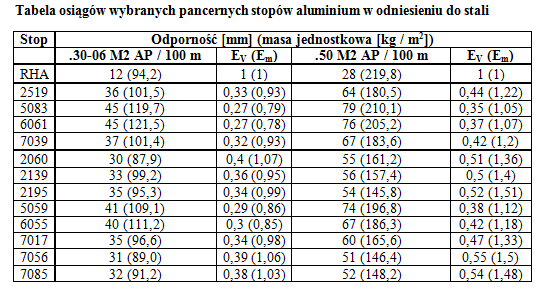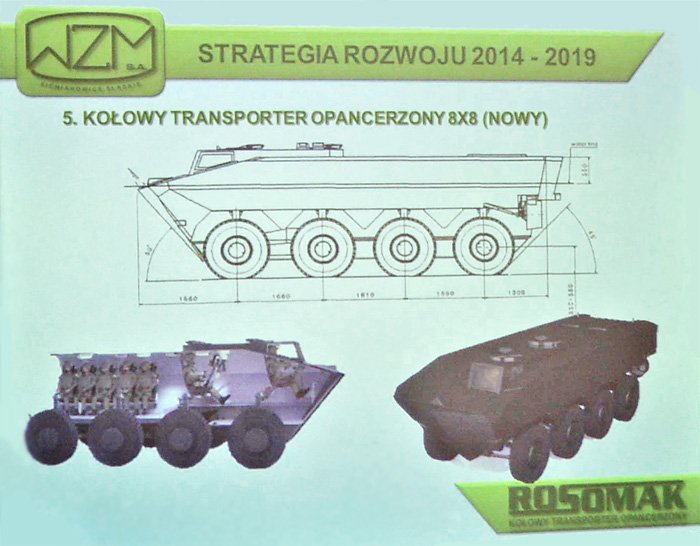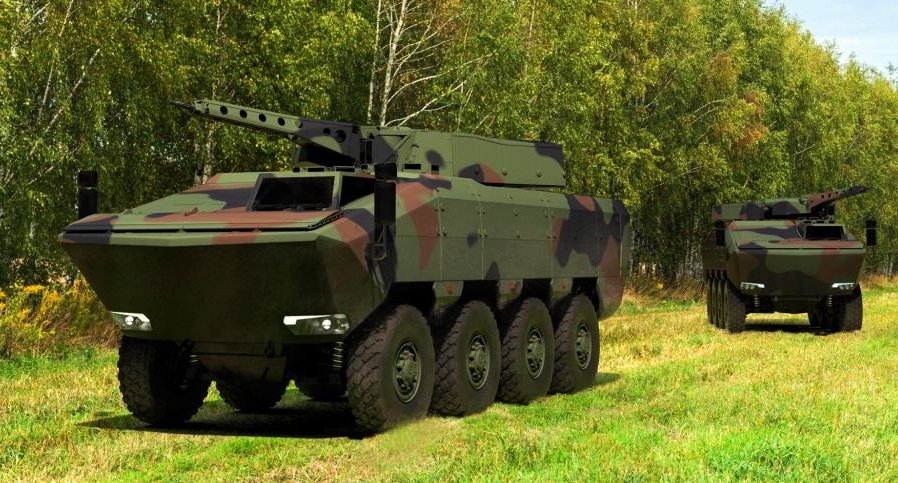
Zadlo
-
Posts
226 -
Joined
-
Last visited
-
Days Won
7
Content Type
Profiles
Forums
Blogs
Gallery
Downloads
Events
Posts posted by Zadlo
-
-
6 hours ago, TokyoMorose said:
3UBR6? Not a "APFSDS", but the mediocre performance and big hole would line up well.
That was blue-on-blue but rather with NM 222 (Mk 264) MP-T than with NM 225 (Mk 258) APFSDS-T.
- TokyoMorose and Molota_477
-
 2
2
-
8 hours ago, heretic88 said:
Not at all. T-72 was a result of rivalry and jealousy between Tagil and Harkov. Nothing more. It wasnt cheaper and wasnt simpler than the T-64. The soviets did not need the T-72 at all.
Soviets needed T-72 in early 70s because T-64A (and later B) had turned into one huge experiment. You can't have a proven MBT if tanks from other production series are made differently.
-
5 hours ago, SirFlamenco said:
It still seems quite high, but I'm willing to believe it considering tungsten carbide often passes through steel very easily.
Do you have any ideas what it's made of?
Ad. 1
The main aspect is the hardness of armour material which enables to erode the projectile. For RHA you have some 300 HB, classic HHA has ~500 HB, UHHA has 600-700 HB. Meanwhile worse alumina has ~1400 HV, better one has ~1700 HV, silicon carbide has between 2200 and 2500 HV, meanwhile boron carbide has ~3000 HV. But yeah, boron carbide is not the best material because usually turns into glass during impact. On the other side tungsten carbide used in cores has ~1200 HV.
If armour material has higher hardness that projectile / core material it is better for protection. In case of ceramics shape is another factor while often ceramics placed in plates made for personal protection don't have optimal shape for protection (in reference to armour thickness) but here these shapes are better for multi-hit protection.
Ad. 2
You can do it only with silicon carbide, boron carbide or composite composed of both. Nitrides don't offer such low effective weight. Zirconia is too heavy. While you can't make such a small grain in alumina.
But spall liner from both sides of ceramics helps a lot in lowering armour effective weight. Also the method of effective weight calculation is important to conclude how light the armour can really be.
-
What is dimensions of single ceramic 'block' in a composite plate? It is quite important to understand this problem.
-
Performance of several aluminium alloys against .30-06 and .50 projectiles - chart is based on several US standards (MIL-DTLs) and experimental tests made by USARL.
* E(V) - TE, E(m) - ME
-
But Russians didn't use inches but lines.
-
Only vaporwave because people from Arey are smart people and they want to insert ceramic fillers to armor.
SpoilerWhile MoD wants to see Nozh on these vehicles.

-
-
2 hours ago, Toxn said:
If we take the maximum ground pressure (350kPa) and plug it into an 8x8 vehicle, we get something along the lines of a 15mt limit. This seems a bit incongruous when a number of modern 8x8 AFVs are pushing 30mt. Am I just applying this thing wrong?
A bit wrong. For standard 8x8 wheeled APC using 14.0R20 tires the acceptable weight for this ground pressure (I mean 350 kPa) is almost 24 mt (precisely 23,8 mt). For newer vehicles using 16.0R20 tires it is 28,5 mt. On the other side for 13mt SKOT using smaller tires (13.0R18) the ground pressure is 250 MPa.
But there's one assumption. This numbers are related to situation where the vehicle goes through untreated, wet terrain f.e. ploughed-up cornfield. On unpaved road the problem exists only when the ground pressure is higher than 400 kPa.
-
As far I've counted mass restrictions for 16.9R24 tires (d = 1,333 m, b = 0,44 m), 0.35 ratio and 8 psi maximum ground pressure.
4x4 vehicle - 2,5 metric tons
6x6 vehicle - 3,5 metric tons
8x8 vehicle - 4,4 metric tons
10x10 vehicle - 5,2 metric tons
12x12 vehicle - 5,9 metric tons
-
On 3/24/2020 at 9:46 PM, N-L-M said:
Size is essentially unrestricted, axle load must be below 10 tons (per axle ofc)
Axle load with this ground pressure will be much lower. I'll count that.
MMP ground pressure formula (in metrics)

K - constant dependent on number of axles and drive axles
g - gravity (~9,8 m/s^2)
m - weight of vehicle
n - number of axles
d - outer diameter of chosen tires
b - width of chosen tires
(o/h) - tire deflection to height ratio (usually between 0,15 and 0,35)
And table regarding the choice of K ratio

The top line - number of drive axles
The side lide - number of axles
Source: M. Saarilahti, Modelling of the wheel and tyre. 1. Tyre and soil contact, Soil Interaction Model. Appendix Report No. 5, s. 24-29
-
What is "psft" in ground pressure requirements?
Edit:
This is pounds per square feet? But 8 psf is 380 Pa. The ground pressure of human and modern FAVs is ~55 - 70 kPa (8 to 10 psi). The very safe pressure for wheeled vehicles is 170 kPa (25 psi). In case of modern wheeled APCs is around 200 to 350 kPa (29 to 51 psi). In case of human with snowshoes it is ~700 Pa.
-
Find 10 differences
- unrealized Rosomak successor
- Romanian Agilis planned to produce in cooperation with Rheinmetall
-
13 hours ago, J.J.S. said:
I have no idea where you learned physics to conclude that steel cuboid with 150x150x6 mm dimensions has the same or higher weight than steel cuboid with 150x150x10 mm dimensions, excluding the additional mass of cassete sides, screws and mounting beam. Then learn Gurney equations.
And you don't even how thick are plates in ERAWA-2 and what is inside of them.

-
-
4 hours ago, J.J.S. said:
This lower part is quite heavy and will move with lower velocity than upper plates. Moreover these mounting beams will additionally slow it down. That's why such movement shouldn't be efficient against cumulative jet.
And that's why upper part in ERAWA has the same or higher weight than the lower part?
Learn some physics first at all.
-
On 3/17/2020 at 12:02 AM, Zadlo said:
I'll send the main article where the modern Polish armor steels (also maraging and amorphous) are presented but first at all I need my PC back.
Oh, here you got.
-
Well, jet tip is faster in HEAT warhead than in EFP one.
 But that's not the point.
But that's not the point.
The idea of EFP precursor in tandem warhead is quite simple - initiate the ERA but do not take large part in classic penetration. In this case to initiate ERAWA you need to have effective HEAT warhead. As you can see in one article you posted there were one type of warheads which caused the ERA explosion. They have also 42mm caliber but they penetrate ~260mm of steel alone.
-
3 hours ago, Beer said:
I always thought the export MS was inferior to the domestic M.
T-90SM (not MS) is improved version of T-90S, not export version of T-90M.
-
On 3/11/2020 at 12:20 AM, Zadlo said:
There's a third part too but that would only disguise the origin of this steel. I can only say that this Polish grade steel is a reverse-engineered version of some well known nanostructural armor steel.
The thickest steel plates which was made by Poles were 10mm (0,4") thick and there will be two production lines in Poland. One in Labedy mechanical plant, second in civilian part of Huta Stalowa Wola which is the main Polish producer of military grade steel.
Oh, my fault. That's domestic design with Western-style name.
 The steel is called NANOS-BA. And thickest steel plates made were 15mm thick.
The steel is called NANOS-BA. And thickest steel plates made were 15mm thick.
I'll send the main article where the modern Polish armor steels (also maraging and amorphous) are presented but first at all I need my PC back.
-
7 minutes ago, Kal said:
Just how much carbon is in the polish bainite?
Well
QuoteThe examined material consisted of sections of nanostruc-tured bainitic steel (NBA) with the following composition Fe-0.58%C-1.9%Mn-1.8%Si-1.3%Cr-0.75%Mo (weight %)
-
Ito-Bessyo formula isn't good for steels with more than 0,16% C.
In this case better is the formula from International Institute of Welding

And according to this CEV is 1,31% which means this steel is not good for welding unless you heat it up to ~370 Celsius degrees.
-
Militarysta has shown only one part of the subject. Here's the second, more material part.
There's a third part too but that would only disguise the origin of this steel. I can only say that this Polish grade steel is a reverse-engineered version of some well known nanostructural armor steel.
The thickest steel plates which was made by Poles were 10mm (0,4") thick and there will be two production lines in Poland. One in Labedy mechanical plant, second in civilian part of Huta Stalowa Wola which is the main Polish producer of military grade steel.
-
You say "brittle"?

The same steel after bending test.




Britons are in trouble
in Mechanized Warfare
Posted
Maybe it would be theoretical in Ukraine. In Central Europe CR2 would spot T-14 at maximum 1500 meters.
It's not hard.
It's impossible because of topography.
Even optical artillery observation systems placed on ground platforms are limited there to maximum 3 kilometers.